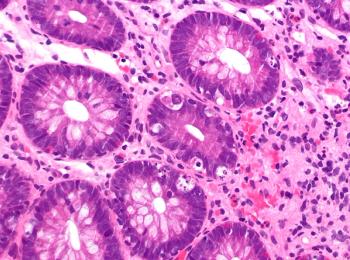
Researchers Identify AML Precursors
Researchers have identified distinct pre-leukemic hematopoietic stem cells (HSCs) in acute myeloid leukemia (AML) patients.
Researchers have identified distinct pre-leukemic hematopoietic stem cells (HSCs) in acute myeloid leukemia (AML) patients. The source cells of AML and the key founding mutations are not well understood, because AML is usually diagnosed without the detection of a pre-leukemic phase in patients. Now, researchers at Princess Margaret Cancer Centre, the University of Toronto, and other institutions have identified these precursor cells from which AML evolves. The study is
Liran I. Shlush, MD, PhD, Sasan Zandi, PhD, MD, and lead author John E. Dick, PhD, of Princess Margaret Cancer Centre in Toronto, purified HSCs, as well as progenitor and mature cell fractions from the blood of AML patients. These cells all consistently had the DNMT3A mutation at a high allelic frequency but no NPM1 mutations in the AML blast cells.
While NPM1 and FLT3-ITD are recurring mutations found in a subset of AML patients, these findings show that these two mutations, unlike the DNMT3A mutation, are not founding mutations and occur after the acquisition of the DNMT3A mutation. Current agents targeting NPM1 and FLT3-ITD may only work transiently, the research suggests.
The study “provides compelling evidence that the early-stage cells of acute myeloid leukemia are not completely outcompeted and rendered extinct by their more aggressively cancerous and numerous progeny, but instead persist and show defined genetic and functional properties,” wrote Nicola Potter, PhD, and Mel Greaves, PhD, of the Centre for Evolution and Cancer, the Institute of Cancer Research in London, in their editorial on the results.
These DNMT3A-mutated HSCs had a growth advantage in immunodeficient mouse models, confirming that they are indeed pre-leukemic HSCs.
Taking serial samples from five patients at diagnosis and through remission and relapse, these pre-leukemic cells were found to persist after the patient was treated with chemotherapy and went into remission. The DNMT3A mutation begins early in the evolution of AML, likely arising in the HSCs, leading to a pool of cells that can accumulate further mutations and therefore become resistant to therapies, according to the study. These results suggest that the original ancestral clone can persist at remission and serve as the cause of relapse following chemotherapy. DNMT3A may serve as both a biomarker to track the course of disease and a therapeutic target for drug development.
“Collectively, our results support a model wherein the cell of origin for DNMT3A mutation AML is an HSC and the initiating DNMT3A mutation results in the generation of an expanded pool of HSCs and downstream progenitors, within which additional mutations such as NPM1c are acquired, driving progression to AML,” stated the authors in the publication.
According to the authors, if it is further confirmed that these HSCs establish the AML lineage, these pre-leukemic HSCs should be targeted for eradication. “Our findings provide a paradigm for the detection and treatment of pre-leukemic clones before the acquisition of additional genetic lesions engenders greater therapeutic resistance,” stated the authors in the publication.
This study also suggests that minimal residual disease may be better defined as both detection of post-therapy survival of AML blasts and/or pre-leukemic HSCs.
Newsletter
Stay up to date on recent advances in the multidisciplinary approach to cancer.

















































































